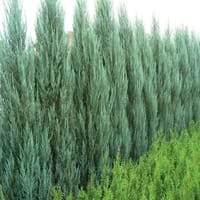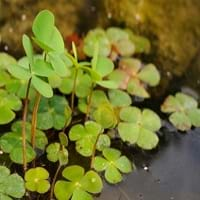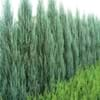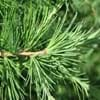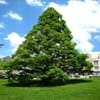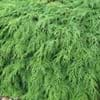Life Span
Perennial
Perennial
Type
Needled or Scaled Evergreen
Aquatics
Origin
Hybrid origin, North America
Australia
Types
Not Available
Marsilea quadrifolia, Marsilea hirsuta
Habitat
Cold Regions, Dry areas, Dry Forest
Bog Garden, Cultivated Beds
USDA Hardiness Zone
3-7
9-11
Sunset Zone
1a, 1b, 2a, 2b, 3a, 3b, 5, 6, 7, 8, 9, 10, 11, 12, 13, 14, 15, 16, 17, 18, 19, 20, 21, 22, 23, 24
21,22
Habit
Pyramidal
Mat-forming
Flower Color
Non Flowering Plant
Not Available
Flower Color Modifier
Bicolor
Not Available
Fruit Color
Blue
Non Fruiting Plant
Leaf Color in Spring
Green
Green, Light Green
Leaf Color in Summer
Green
Green, Light Green
Leaf Color in Fall
Green
Green
Leaf Color in Winter
Green
Green
Leaf Shape
Acicular
Four wedge-shaped leaflets
Plant Season
Spring, Summer, Fall
Spring, Summer, Fall, Winter
Sunlight
Full Sun
Full Sun, Partial Sun
Type of Soil
Clay, Loam, Sand
Loam, Sand
The pH of Soil
Acidic, Neutral, Alkaline
Acidic, Neutral
Soil Drainage
Well drained
Poorly Drained
Bloom Time
Spring
Not Available
Tolerances
Drought
Wet Site
Where to Plant?
Ground
Container, Ground, Pot
How to Plant?
stem tip cuttings, Tip cutting
Spores
Plant Maintenance
Medium
Medium
Watering Requirements
Average Water Needs, Do not water frequently
Needs very little water
In Summer
Lots of watering
Lots of watering
In Spring
Moderate
Moderate
In Winter
Average Water
Average Water
Soil pH
Acidic, Neutral, Alkaline
Acidic, Neutral
Soil Type
Clay, Loam, Sand
Loam, Sand
Soil Drainage Capacity
Well drained
Poorly Drained
Sun Exposure
Full Sun
Full Sun, Partial Sun
Pruning
Remove damaged leaves, Remove dead branches, Remove dead leaves
Remove damaged leaves, Remove dead branches, Remove dead leaves
Fertilizers
All-Purpose Liquid Fertilizer
Organic Manure
Pests and Diseases
Red blotch
Aphids, Clover Clot
Plant Tolerance
Drought
Drought
Flowers
Insignificant
None
Flower Petal Number
Single
Not Available
Fragrant Fruit
No
Not Available
Fragrant Bark/Stem
Yes
No
Foliage Texture
Medium
Medium
Foliage Sheen
Not Available
Matte
Attracts
Aphids, Early/Late Blight
Frogs
Allergy
Not Available
Beriberi, Toxic
Aesthetic Uses
Not Used For Aesthetic Purpose
Ground Cover
Beauty Benefits
Not Available
Not Available
Environmental Uses
Air purification
Fixes Nitrogen
Medicinal Uses
Cold, Cough, Laxative
Astringent
Part of Plant Used
Shoots, Stem
Seeds, Spores
Other Uses
Not Available
Used like flour, Used to make dough
Used As Indoor Plant
No
Yes
Used As Outdoor Plant
Yes
Yes
Garden Design
Foundation, Hedges, Mixed Border, Rock Garden, Wall, Screening, Wind Break
Container, Houseplant, Tropical, Water Gardens
Botanical Name
JUNIPERUS scopulorum 'Cologreen'
MARSILEA drummondii
Common Name
Rocky Mountain juniper
Common Nardoo, Pepperwort, Water Clover
In Hindi
Juniperus scopulorum
Water Clover
In German
Juniperus scopulorum
Wasser Klee
In French
Juniperus scopulorum
Eau Clover
In Spanish
Juniperus scopulorum
Agua trébol
In Greek
Juniperus scopulorum
νερό Clover
In Portuguese
Juniperus scopulorum
Clover água
In Polish
Juniperus scopulorum
Woda Clover
In Latin
Juniperus scopulorum
Trifolium aqua
Phylum
Tracheophyta
Pteridophyta
Class
Pinopsida
Filicopsida
Order
Pinales
Hydropteridales
Family
Cupressaceae
Marsileaceae
Clade
Not Available
Not Available
Tribe
Not Available
Not Available
Subfamily
Not Available
Not Available
Number of Species
Not Available
Difference Between Juniperus scopulorum and Water Clover
If you are confused whether Juniperus scopulorum or Water Clover are same, here are some features about those plants to help you choose better. Many people think that these two plants have the same characteristics, but one can see Juniperus scopulorum and Water Clover Information and learn more about it. Fertilizers required for proper growth of Juniperus scopulorum are All-Purpose Liquid Fertilizer, whereas for Water Clover fertilizers required are Organic Manure. Hence, one should know the basic difference between Juniperus scopulorum and Water Clover if you are planning to have them in your garden to enhance its beauty.
<
Flowering PlantsImportance of Juniperus scopulorum and Water Clover
Want to have the most appropriate plant for your garden? You might want to know the importance of Juniperus scopulorum and Water Clover. Basically, these two plants vary in many aspects. Compare Juniperus scopulorum and Water Clover as they differ in many characteristics such as their life, care, benefits, facts, etc. Every gardener must at least have the slightest clue about the plants he wants to plant in his garden. Compare their benefits, which differ in many ways like facts and uses. The medicinal use of Juniperus scopulorum is Cold, Cough and Laxative whereas of Water Clover is Astringent. Juniperus scopulorum has beauty benefits as follows: Not Available while Water Clover has beauty benefits as follows: Not Available.
Compare Facts of Juniperus scopulorum vs Water Clover
How to choose the best garden plant for your garden depending upon its facts? Here garden plant comparison will help you to solve this query. Compare the facts of Juniperus scopulorum vs Water Clover and know which one to choose. As garden plants have benefits and other uses, allergy is also a major drawback of plants for some people. Allergic reactions of Juniperus scopulorum are Not Available whereas of Water Clover have Beriberi and Toxic respectively. Having a fruit bearing plant in your garden can be a plus point of your garden. Juniperus scopulorum has no showy fruits and Water Clover has no showy fruits. Also Juniperus scopulorum is not flowering and Water Clover is not flowering . You can compare Juniperus scopulorum and Water Clover facts and facts of other plants too.
